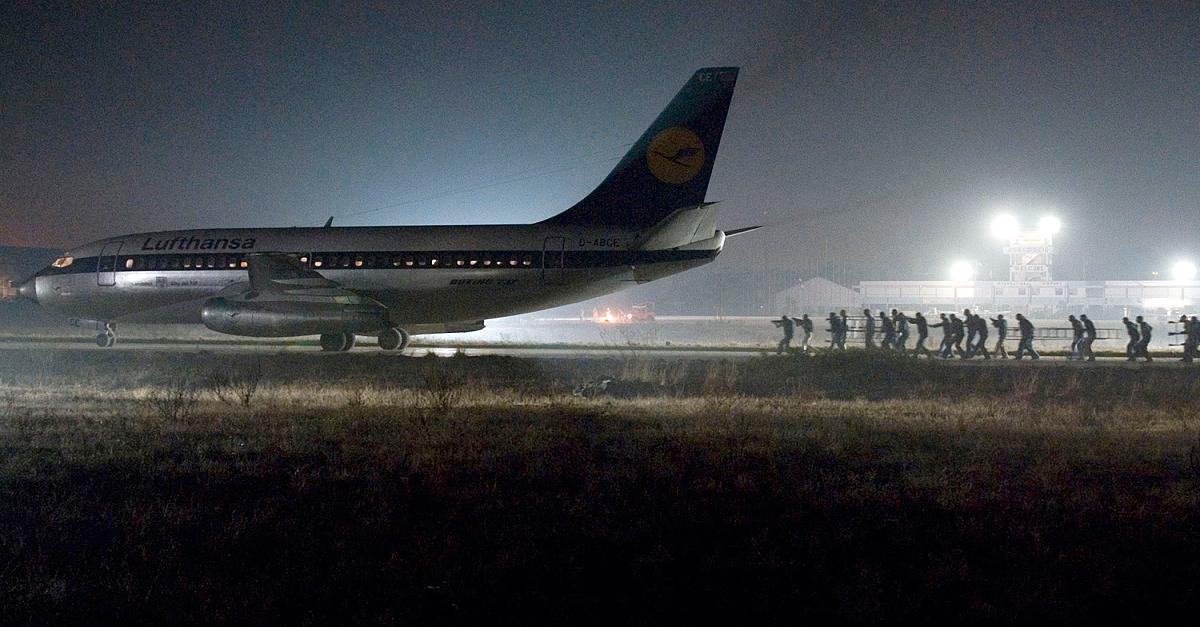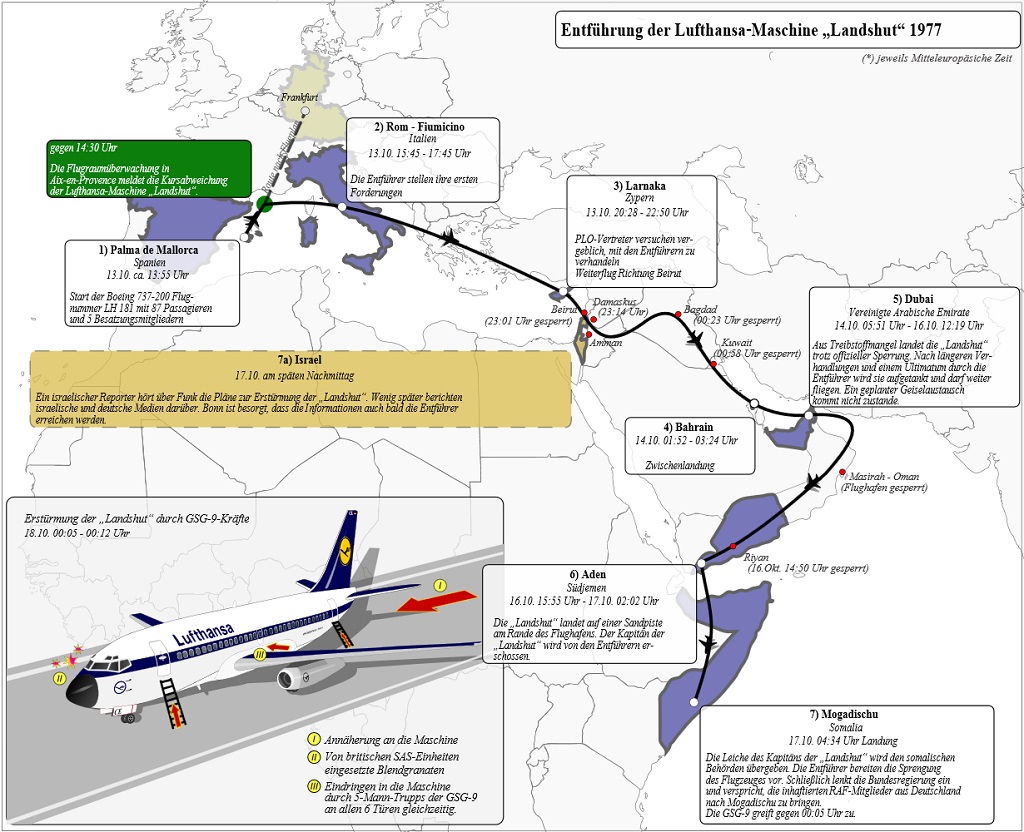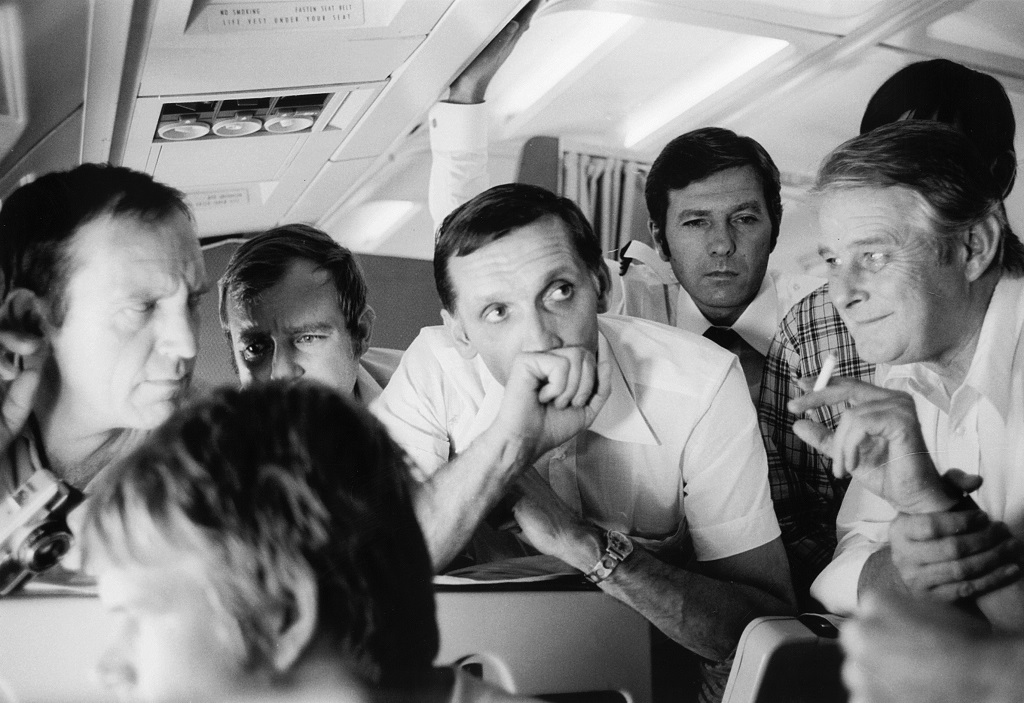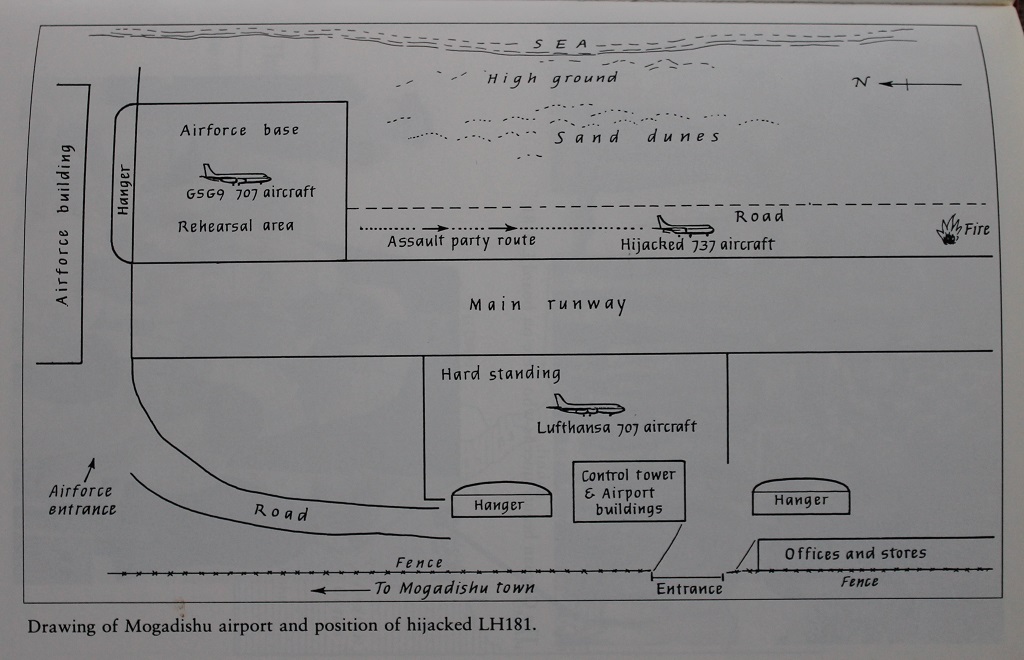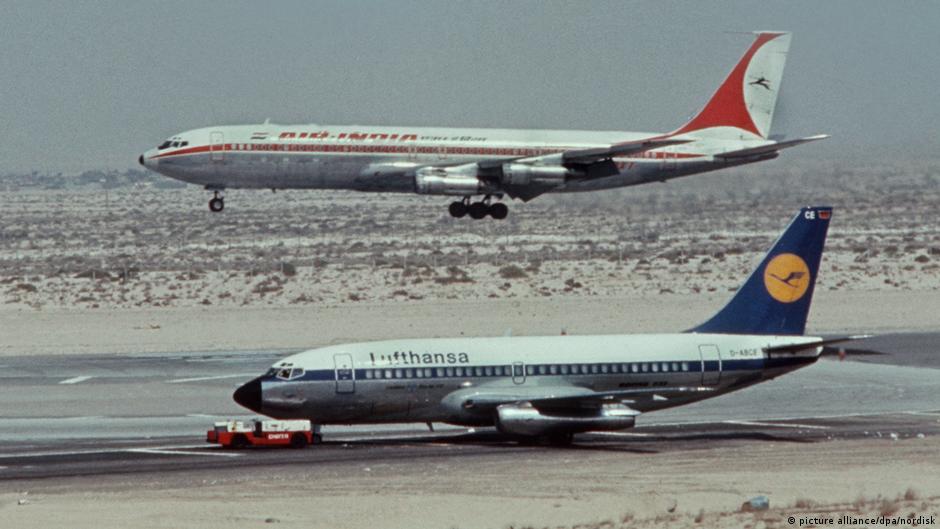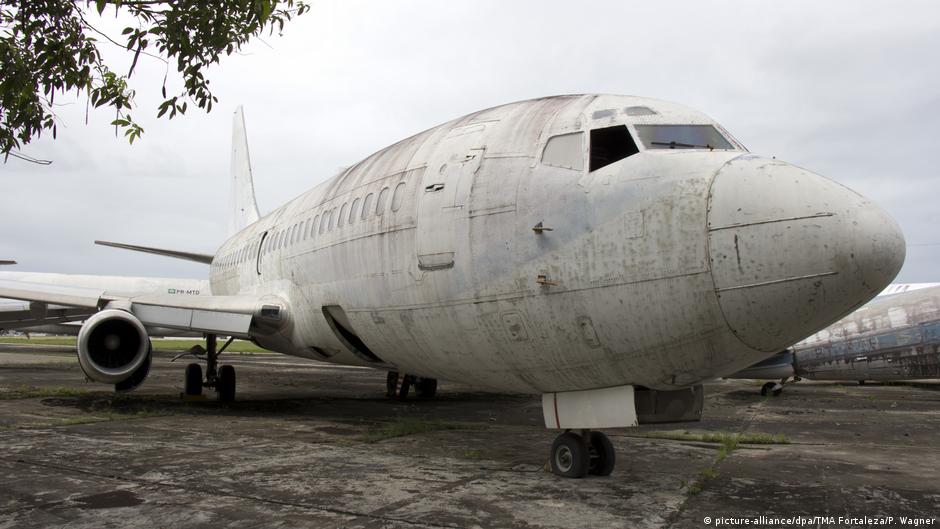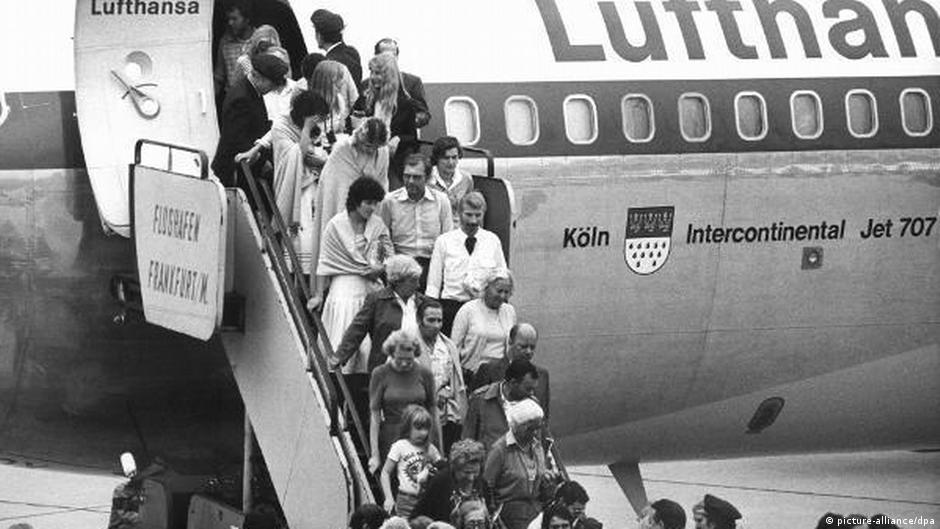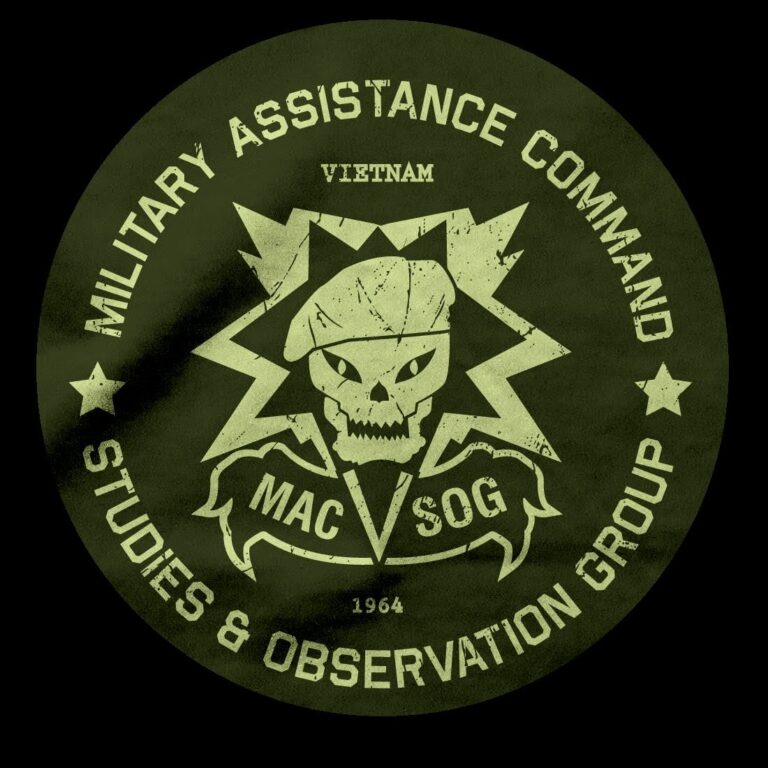Operation Magic Fire 1977
by Jan-Phillip Weisswange (esut.de)
On the night of October 17-18, 1977, GSG 9 carried out “Operation Magic Fire” to free the hijacked Lufthansa plane “Landshut”.
The badge specially made for the ceremony “40 Years of Magic Fire” (Photo: JPW)
It is still regarded today as a lesson for successful commando operations. And it is proof that the fight against terrorism is worthwhile. The flight LH181 on October 13, 1977 from Palma de Mallorca to Frankfurt should only take a little over an hour. It turned out to be a torture of several days for the 82 passengers and five crew members on board. Because a four-man team of terrorists – two women and two men – took over the violence on board the Boeing 737-200 “Landshut” at around 2.30 p.m. The demands of the “Martyr Halimeh” command led by “Captain Mahmud”: the release of eleven imprisoned German left-wing extremist terrorists, two Palestinian terrorists imprisoned in Turkey and a ransom of 15 million US dollars. Otherwise all hostages and the employer president Hanns-Martin Schleyer, kidnapped by the Red Army Faction (RAF) on September 5, 1977, should be killed. The ultimatum was supposed to expire on October 16.
Contrary to what the kidnappers had assumed, the Arab states did not show themselves willing to be drawn into the crisis in the next few days. They refused to land the “Landshut”. After stopovers in Rome, Larnaka and Bahrain, the random flight of the machine with the aircraft registration D-ABCE led to Dubai on October 14th. There were tough negotiations there, but without result. On October 16 the machine started to Aden. Here the Landshut had to land next to the closed runway. In Aden, the terrorists also shot flight captain Jürgen Schumann. Co-pilot Jürgen Vietor finally had to steer the “Landshut” to Mogadishu, where it was in the early morning hours of October 17th. arrived.
Clear fronts
After the kidnapping of the “Landshut”, Chancellor Helmut Schmidt formed a crisis team in the Federal Chancellery. The clear line was: the demands of the terrorists will not be given in. Nevertheless, Minister of State Hans-Jürgen “Ben Wisch” Wischnewski followed the hijacked aircraft with a negotiating team in a special machine. The GSG 9 was also alerted immediately after the kidnapping in order to be ready for a rescue operation. A task force led by their commander, Lieutenant Colonel i. BGS Ulrich K. Wegener, initially followed the “Landshut” in a special Lufthansa plane and was ready in Ankara. When the “Landshut” landed in Dubai, Wegener, his adjutant Baum and Unterführer Dieter Fox also flew there. They joined the “Ben Wisch” team. A planned liberation operation no longer took place. From Dubai they also went to Mogadishu, where they arrived on October 17th around noon.
In the “Ben-Wisch-Team”: Wegener (center) and Gerhard Boeden, head of the counter-terrorism department in the BKA (right, with the cigarette that is banned on board today) (Photo: Federal Police Archives)
Ben Wisch succeeded in obtaining permission from the Somali government for a joint operation by German and Somali forces. The federal government then apparently responded to the demands of the kidnappers, who had already prepared the machine for demolition. She asked for a further extension of the deadline to be able to transport the prisoners to the exchange site. The kidnappers set a final ultimatum, which was announced on October 18. should leave at 1.30 a.m.
The GSG 9 gets the “Go”
The German GSG 9 task force – it had flown from Ankara back to Sankt Augustin and then to Crete for camouflage reasons – landed in the dark on October 17 at around 7.30 p.m. (CET) and was piloted to the military part of Mogadishu airport adjacent to the north. Somali forces cordoned off the airport.
The initial situation in Mogadishu on October 17th, 1977 in the evening. Sketch by Barry Davies (Photo: JPW)
The negotiating experts in the Vishnevsky staff distracted the kidnappers with intensive radio communications about the imminent transfer of the prisoners. The task force got ready after landing. Rehearsal, the final exercise before access, took place on her Boeing 707 “Stuttgart”. Wegener reported to Helmut Schmidt that he was ready for action and was convinced of the success of the mission. That evening he received the order from the Chancellor by telephone.
Course of the operation
The division of forces was as follows: The ten-man reconnaissance and precision rifle command was under the leadership of the deputy commander, Major i. BGS Klaus Blätte. The equipment included Mauser S66 sniper rifles with night vision devices “Night Owl” and reconnaissance technology. The access team was led by Wegener. It consisted of six storm troops (one per door) of five men each. There were also a medical and reserve troop with three and five men and a pioneer group with four men. The two SAS men Major Alistair Morrison and Sergeant Barry Davis were also assigned here. They had brought their brand new “Stun-Grenades”, lightning bolt grenades. The rest of the armament and equipment included the S&W .38 revolver and P9S pistols for working in the machine, the MP5, new British-made “Bristol” protective vests and special rubber-coated ladders.
A collection room was set up away from the machine for the hostages to be evacuated. Somali armed forces formed an outer ring and also prepared a fire a few hundred meters in front of the cockpit of the “Landshut” for a diversionary maneuver.
At around 10:00 p.m., the forces went into the starting position. The reconnaissance and precision riflemen worked their way up to about 30 meters from the machine and continuously provided reconnaissance results. The access forces began to approach from around 11 p.m. They reached the machine at around 11.30pm.
11.50 p.m.: The Somali soldiers light the diversion fire. The negotiating group in the tower radioed the terrorist leader, Captain Mahmud, to inquire about the transfer conditions.
Screenshot: The storm troops approach the “Landshut”. Recreational scene from the feature film “Mogadishu” (2008) by Roland Suso Richter (director) and Maurice Philip Remy (script)
11.55 p.m.: The storm troops take their storm starting positions.
00.00 a.m .: Special ladders are placed on the four doors and on the two emergency exit areas behind the wings, the troops move into position.
00:05: At the command “fire magic”, the two SAS men ignite several lightning bolt grenades, almost simultaneously the storm troops open the doors. Five storm troops penetrate the machine, squad 2 (front right) has to avoid obstacles and move up behind squad 1 (front left).
“Magic Fire” – painting by Heinrichhaben (Photo: JPW)
A fire fight develops inside the aircraft. Squad 1 switches off Mahmud in the cockpit. A terrorist is hit and seriously injured in the first class corridor – she survives. The third terrorist can throw two hand grenades before he is eliminated, the explosion of which injures the stewardess Gabriele Dillmann (now von Lutzau) in the leg. A fourth terrorist is neutralized in the front toilet. A GSG 9 officer suffers a slight wound from a bullet through the neck.
During the fire fight, the evacuation begins in the rear area (troops 5 and 6) and via the emergency exits (troops 3 and 4).
12:12 am: Wegener reports “Springtime” – the code word for the successful completion of the campaign. Results: All 86 hostages freed, three slightly wounded, one GSG 9 man slightly wounded, three of four terrorists killed, one terrorist seriously injured handed over to the Somali authorities. The liberated were still on October 18 with a special machine to Frankfurt a. M. brought. The GSG 9 also landed on October 18 at around 3:30 p.m. at Cologne / Bonn Airport.
Aftermath and evaluation
As much as the joy about the successful “Operation Magic Fire” turned out to be, the “German Autumn 1977” ended dramatically. On October 18, 1977, RAF terrorists Andreas Baader, Gudrun Ensslin and Jan-Carl-Raspe committed suicide in the high-security prison in Stuttgart-Stammheimn, and their comrade Irmgard Möller was found seriously injured. The RAF shot and killed Hanns-Martin Schleyer on October 18, 1977. Nevertheless, the Federal Republic of Germany had proven that it would not allow itself to be blackmailed by terrorist violence. Since then there has never been another attempt by the RAF to release prisoners by taking them hostage. The attitude of the Federal Government at the time towards its security forces certainly contributed significantly to this strategic success: It trusted in their skills and deployed them resolutely.
Jan-Phillip Weisswange
Hijacked ′Landshut′ plane returning to Germany | Germany | News and in-depth reporting from Berlin and beyond | DW
Lufthansa Landshut 1977 – 2017
“To this day, the rescue of the ‘Landshut’ is a living symbol of a free society, which cannot be defeated by fear and terror,” said Foreign Minister Sigmar Gabriel.
The Popular Front for the Liberation of Palestine – assumed to be working with the Red Army Faction (RAF), a far-left insurgent group in West Germany – hijacked the plane in October, 1977. The hijackers’ primary demand was the release of 10 imprisoned RAF leaders.
The RAF, which the West German government considered to be a terrorist group, had assassinated Siegfried Buback, the attorney general of West Germany, earlier that year. Industrialist Hanns Martin Schleyer and Jürgen Ponto, the head of the Dresdener Bank, were also kidnapped and murdered. The series of events was later dubbed the “German Autumn.”
Tense standoff culminates in special forces rescue
Four PLFP members hijacked Lufthansa Flight 181 from Mallorca to Frankfurt on October 13, 1977. The “Landshut,” named after a city in Bavaria, then embarked on a four-day journey through the Arabian Peninsula, stopping in five different cities to refuel.
The hijackers held the 86 passengers and five crew members hostage in an attempt to secure the release of 10 RAF members being held in Stuttgart plus two imprisoned Palestinians in Turkey and $15 million (about 35 million German marks at the time). The plane’s captain, Jürgen Schumann, was executed in Aden, a city in southern Yemen.
Lufthansa Landshut 1977
The Landshut plane sitting on the tarmac in Dubai during its four-day odyssey in October, 1977
The plane eventually settled in the Somalian capital of Mogadishu on October 17, 1977. After negotiations with the Somalian government, the German foreign ministry sent the country’s elite tactical unit GSG 9 – which had been established five years prior following the hostage crisis at the 1972 Munich Olympics – to retake the plane.
Three of the four hijackers were killed during the ambush, known as Operation Feuerzauber, while one commando and four passengers were injured in the exchange. The German commandos and the 86 “Landshut” passengers then returned to Germany on October 18, 1977.
‘Landshut’ returning home
Lufthansa Landshut 1977 – 2017 | Rückkehr der Landshut-Geiseln nach Frankfurt
Passengers of the ‘Landshut’ plane arrive in Frankfurt on October 18, 1977
The Boeing 737 returned to service a few weeks after the hijacking. Lufthansa then sold the plane in 1985 and it ended up in the fleet of Brazilian carrier TAF Linhas Aereas. TAF then decommissioned the plane in January 2008 and stored it in the Fortaleza airport.
The German foreign ministry said it bought the plane for 75,936 Brazilian real (20,000 euros, $23,307) from Brazilian airport operator Infraero.
“Great news,” Jürgen Vietor, the co-pilot of the “Landshut” during its 1977 hijacking, told Bild. “The ‘Landshut’ is a symbol of ‘German Autumn.’ It belongs in Germany.”
A-F 5.5 Feuerzauber
The fall of 2017 brought the 40th anniversary of the liberation of the Lufthansa plane, Landshut, which was hijacked by terrorists in Mogadishu. The liberation mission (Operation Feuerzauber) was executed by the still quite new GSG-9 unit, founded in 1972. This successful mission under the command of founder Ulrich K. Wegener firmly anchored the unit in the memory of the public. Especially in today’s times, in which terror seems to be everywhere, one cannot pay enough tribute to a unit such as the GSG-9 for their tireless work against terrorism and serious crime. Thus we would like to honor the unit and its members with two special models of the A-F 4.5 and 5.5, for which the GSG-9 granted us their official approval to add the mission badge of the unit, the famous wings. Hardly any other knifemaker has influenced the field of tactical knives as much as William H. “Bill” Harsey, his designs have earned him an excellent reputation in the knife world. His modification of the legendary Boker Applegate-Fairbairn combines the knife used by many elite units with modern elements. In order to make the promotion more than just symbolic, Boker will donate € 5.00 from every unit sold to a charity of GSG-9’s choice. These impressive commemoratives feature a finely satined blade and stainless steel handle. The wings of the GSG-9 are emblazoned on the blade. The handle is milled from certified imported rosewood and has a characteristic grooved profile for maximum grip. Delivery includes a high quality black leather scabbard. Limited to 500 pieces worldwide, and are individually numbered.

